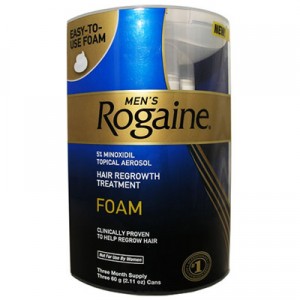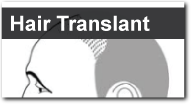 Minoxidil was developed as a drug to lower blood. Minoxidil was also found to stimulate hair growth. No one is certain how minoxidil works, but it is suspected to be caused by the vasodilation (the widening of blood vessels resulting from relaxation of smooth muscle cells) in the scalp. Minoxidil’s effects vary widely from person to person and results are difficult to predict.
Minoxidil was developed as a drug to lower blood. Minoxidil was also found to stimulate hair growth. No one is certain how minoxidil works, but it is suspected to be caused by the vasodilation (the widening of blood vessels resulting from relaxation of smooth muscle cells) in the scalp. Minoxidil’s effects vary widely from person to person and results are difficult to predict.
The topical hair restoration agent minoxidil has been approved for use in treating male-pattern hair loss for over twenty years. Available first as a two-percent solution in 1998 (marketed under the brand name Rogaine), it has more recently been approved for use in five-percent solution; the five-percent solution has been found to be most effective.
What to Expect
The process of losing hair takes time, so it is logical to understand that reversing the process will time as well. As with any regimen, persistence and patience are two requisite factors. The timeline for minoxidil hair growth is similar to that of finasteride.
Month 1 – 2: You may see an increase in shedding during this time. This most likely means minoxidil is working. You will have stimulated a new growth cycle to begin, and this is going to push out some of the deteriorating follicles to make way for the newer, stronger hair.
Month 3 – 9: You may start to see some results. Your first hairs may be small, thin, and light in color. Over time these hairs will cycle through their growth phases and each time come in thicker, healthier and darker. This response time may take up to a year to occur.
After 12 Months: You will have gotten a hold on your hair loss. You may experience new hair growth or see a significant slowing or stoppage of hair loss and thinning.
Clinical Data
In 2003, dermatologists conducted a one-year study in 984 men with male-pattern hair loss. The study evaluated the effectiveness of a 5% minoxidil topical solution applied twice daily. Patients were evaluated every three months.
At the end of one year:
– Hair loss areas of the scalp had become smaller in 62% of the patients, unchanged in 35.1% and larger in 2.9%
– Patients lost an average of 69.7 hairs during washing at the beginning of the study and an average of 33.8 at the end of the study
– Side effects, mostly dermatologic, were reported by 3.9% of patients in the study
Downside and Possible Side Effects
Since it is a topical solution, you must apply it daily once or twice a day. This can be an inconvenience.
Possible side effects include mild scalp irritation. Occasionally, people have experienced low blood pressure or an increase in heart rate at the time of application.


 "Hair Science received high marks from the team at Bosley.
"Hair Science received high marks from the team at Bosley.


